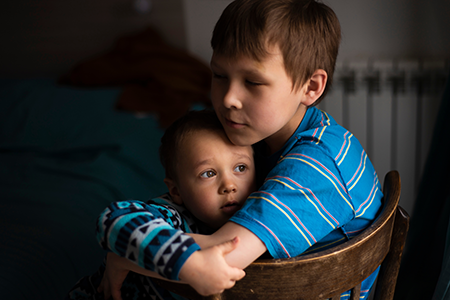The indicator from the EU statistics on income and living conditions (EU-SILC) for children in formal childcare or education by age group is available as a percentage of the population of each age group.
Participation in ECEC is understood as children being cared for through formal arrangements other than by the family. More specifically, the data encompass the following services provided in public or private structures: education at preschool, education at compulsory school, childcare at centre-based services outside school hours (before/after), and childcare at daycare centres. Care provided by childminders without any structure between the carer and the parents (direct arrangements) is not included.
This indicator includes data for two age groups relevant for the Barcelona targets, that is children under age three years and from age three years to minimum compulsory school age. The analysis presented here covers these two age groups, looking at the participation of all children in each group, as well as the participation of children at risk of poverty or social exclusion (AROPE status) within each of the two age groups.
In 2022, 35.9% of children under age three in the EU27 participated in ECEC one hour or over on a weekly basis.
The EU-SILC data by AROPE status (ilc_caindform25 accessed in January 2024) do not calculate percentages using the proportions within each particular AROPE/non-AROPE group of the population, and instead calculate the AROPE population as a percentage of the total population aged under three. Therefore, it cannot be used to look at differences in participation rates by AROPE status.
In the case of children aged from three years to minimum compulsory school age in the EU, 89.2% participated in ECEC services for at least one hour per week.
Analysis over time of shares of children in formal ECEC
The participation of children aged under three in ECEC for at least one hour a week on average has increased since 2015 overall.
In terms of disparities between countries, the standard deviation has increased over time. The change over time can thus be described as upward divergence, since there is an overall improvement but increased disparities between countries.
Regarding children aged from three years to minimum compulsory school age, the EU27 average rate of participation in ECEC increased between 2015 and 2022 overall.
Looking at disparities between countries, the standard deviation for AROPE rates has decreased over time. This change can be seen as upward convergence, since there is an overall improvement and decreased disparities between countries.
Explore the data
 The European Pillar of Social Rights provides for the right to affordable early childhood education and care of good quality, protection from poverty and measures to enhance equal opportunities of children from disadvantaged backgrounds. The analysis presented here covers the share of children in formal early childhood education and care (ECEC), public expenditure on ECEC and the out-of-pocket cost of childcare. Browse the data dashboard to explore the country variations for the EU27.
The European Pillar of Social Rights provides for the right to affordable early childhood education and care of good quality, protection from poverty and measures to enhance equal opportunities of children from disadvantaged backgrounds. The analysis presented here covers the share of children in formal early childhood education and care (ECEC), public expenditure on ECEC and the out-of-pocket cost of childcare. Browse the data dashboard to explore the country variations for the EU27. 




